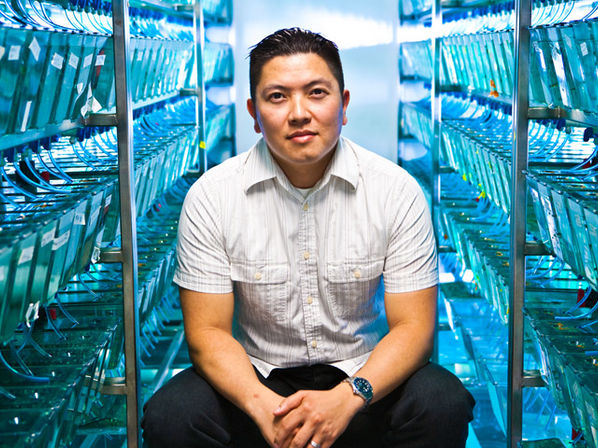Molecule determines friendships
Meeting new people can be both stressful and rewarding. Research at the Max Planck Institute of Psychiatry, reported today in Nature Neuroscience, suggests that a molecule involved in regulating stress in the brain may also help determine how willing we are to leave the safety of our social group and strike up new relationships.
Max Planck Institute of Psychiatry scientists show how a molecule in the mouse’s brain regulates social behavior. They identified a stress mechanism that appears to act as a “social switch”: It caused mice to either increase interactions with “friends” and “acquaintances” or, in contrast, reduce such interactions and seek instead to meet strangers. Since an analogous stress system operates in the human brain, the findings suggest that a similar mechanism may regulate coping with social challenges in humans. Disruptions in this mechanism might be responsible for difficulties with social coping in people affected by social anxiety, as well as in autism, schizophrenia and other disorders.
The study, conducted in the Prof. Alon Chen’s Department, was led by Drs. Yair Shemesh and Oren Forkosh. “Most social contact involves a certain level of social stress or anxiety, even when we interact with people we know well, for example, during a festive meal with extended family,” says Shemesh. “In fact, from the point of view of evolution, moderate levels of social apprehension are essential for safe and successful social engagement.” Chen adds: “In any social environment, an individual’s interests often clash with the group’s needs and expectations. So, the individual must maintain what’s known as a socioemotional balance: between the processing of social signals and his or her emotional response to such pressure.”
The scientists used two behavioral setups to study how mice cope with the challenge of interacting with other mice. One was a “social maze,” in which a mouse can choose to interact through a mesh with either familiar mice or strangers, or avoid interaction all together. The other was a special arena, in which a group of mice was tracked with video cameras and the observations were analyzed using a computer algorithm created for this purpose. The establishment of this unique setup enabled the researchers to quantify various types of interactions – such as approach, contact, attack or chase – among individual mice within the undisturbed group over several days.
The results revealed that a molecular mechanism involved in stress management in the brain of mice determines their behavior toward other mice. The mechanism involves a small signaling molecule, Urocortin-3, and a receptor on the surface of neurons to which this molecule binds. Both Urocortin-3 and the receptor are part of the corticotropin-releasing factor, or CRF system, which plays a central role in coping with stress. Both are prominently expressed in a brain region called the medial amygdala, known to be associated with social behavior in mice.
Mice with high levels of Urocortin-3 in the brain actively sought out contacts with new mice behind the mesh, even ignoring their own group. But when the activity of Urocortin-3 and its receptor was blocked in their brains, the mice chose to socialize mainly within the group, avoiding contact with the strangers.
Forkosh: “In nature, mice live in groups and the social challenges they face within the group differ from their relationship with intruders. It therefore makes sense for a brain mechanism to produce different types of social coping in these two situations. In humans, this mechanism might be involved whenever we consider moving out of our parents’ home, getting a divorce or changing jobs or apartments.”
Original publication
Other news from the department science

Get the life science industry in your inbox
By submitting this form you agree that LUMITOS AG will send you the newsletter(s) selected above by email. Your data will not be passed on to third parties. Your data will be stored and processed in accordance with our data protection regulations. LUMITOS may contact you by email for the purpose of advertising or market and opinion surveys. You can revoke your consent at any time without giving reasons to LUMITOS AG, Ernst-Augustin-Str. 2, 12489 Berlin, Germany or by e-mail at revoke@lumitos.com with effect for the future. In addition, each email contains a link to unsubscribe from the corresponding newsletter.
Most read news
More news from our other portals
Last viewed contents
Category:Hemorrhagic_fevers
Fraunhofer-Institut für Zuverlässigkeit und Mikrointegration (IZM) - Berlin, Germany
Feline_viral_rhinotracheitis






















































